
Roots
There is a quiet, ancestral hum that resonates within every strand of textured hair, a song of resilience and profound connection to the earth’s primal rhythms. It is a whisper from our foremothers, a memory held in the very fiber of our being, suggesting that true care transcends bottles and labels, reaching instead for practices steeped in time. We often speak of moisture retention in clinical terms, of scientific principles and molecular bonds, but to truly understand how something as simple as a head wrap holds such power for coiled and kinky hair, we must journey back, to the very source of our heritage, to the elemental biology that shapes us, and the wisdom that has always known how to tend to what is precious.
The architecture of textured hair, a marvel of natural design, presents unique considerations for moisture. Unlike its straighter counterparts, curly and coily hair possesses an elliptical cross-section, causing the cuticle scales—the outermost protective layer—to lift more readily. This inherent characteristic means the hair’s internal moisture, that vital fluid of life, can escape with greater ease into the surrounding atmosphere. Picture a winding river versus a placid lake; the river’s surface area, with its turns and eddies, allows for quicker evaporation.
Similarly, the structural bends and curves of textured hair expose more surface area, creating pathways for precious water molecules to depart. This biological truth, a gift of our genetic lineage, also presents a constant need for diligent moisture stewardship.
The very structure of textured hair, a heritage of unique design, makes moisture retention a continuous, deliberate practice.

Hair’s Ancestral Anatomy
Our hair’s anatomy is not merely a biological fact; it is a living archive, carrying the imprints of generations. The Cortex, the core of the hair shaft, provides strength and elasticity, while the Cuticle acts as its protective shield. In textured hair, these shields, made of overlapping keratin scales, may not lie as flat as on straight hair, creating tiny openings.
This openness, while contributing to the hair’s voluminous beauty and ability to hold intricate styles, also contributes to its susceptibility to environmental dryness. Understanding this innate quality allows us to appreciate the intuitive wisdom of our ancestors, who, without microscopes or chemical analyses, devised solutions to preserve this moisture, solutions born of necessity and deep observation of nature.
Consider the varied classifications we use today for textured hair—from 3A to 4C. These modern systems, while useful for contemporary product development, often overshadow the rich, non-linear ways in which hair was understood and revered within ancestral communities. Hair was not merely a cosmetic attribute; it was a map of identity, social status, and spiritual connection. The way hair behaved, its ability to hold moisture or its tendency to dry, dictated specific care rituals passed down through familial lines, reflecting an intimate, lived knowledge of its unique needs.
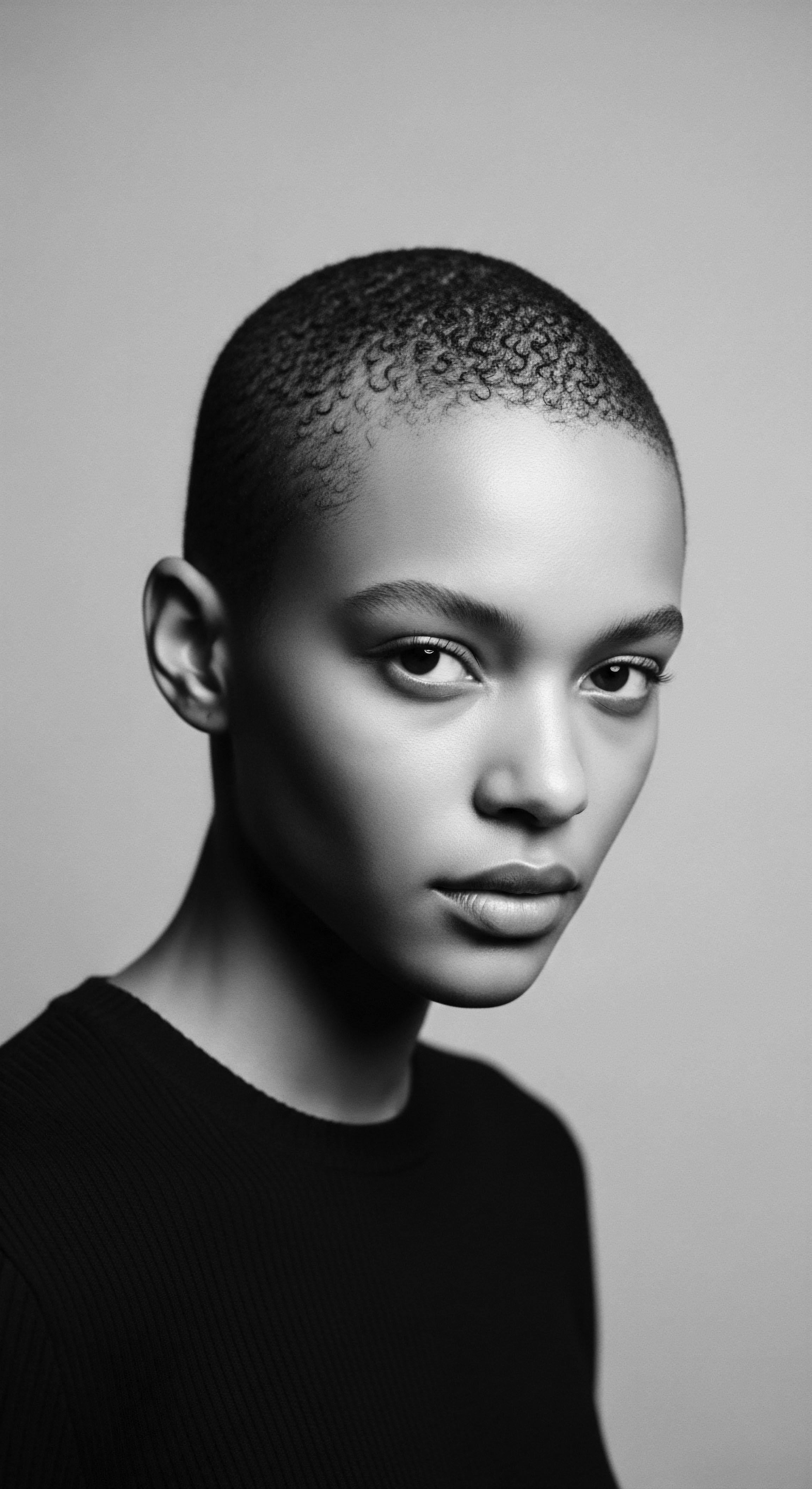
A Lexicon of Care, Old and New
The language surrounding textured hair care has evolved, yet many modern terms echo ancient understandings. “Moisture retention,” for instance, might be a contemporary phrase, but the underlying practice—the sealing of hydration within the hair strand—was a fundamental principle of ancestral beauty rituals. Before science named ceramides and fatty acids, there were the natural oils and butters, the plant-based humectants drawn from the land, applied with knowing hands. The very act of covering the hair, particularly at night, was a silent testament to a deep understanding of how to safeguard its life force from the drying effects of air and friction.
This wisdom extended to how hair grew and its cycles, observing the changes brought by season, age, and life circumstances. Historical environmental factors, like the dry winds of certain African regions, or the humid climes of the Caribbean, informed the local practices of hair care. The methods of protection, including the wearing of head wraps, were not arbitrary; they were meticulously honed responses to specific environmental challenges, aimed at supporting the hair’s natural growth cycle and preventing breakage that hindered length retention.
The journey of a single strand, from its emergence from the scalp to its eventual shedding, is a testament to cycles of growth and renewal. For textured hair, this cycle, while universal in its biological blueprint, faced particular vulnerabilities that ancestral practices sought to mitigate. The protective embrace of a head wrap, as we shall see, became a vital component in preserving the hair’s integrity across these cycles, a practice that transcends mere aesthetics and touches the very heart of generational care.
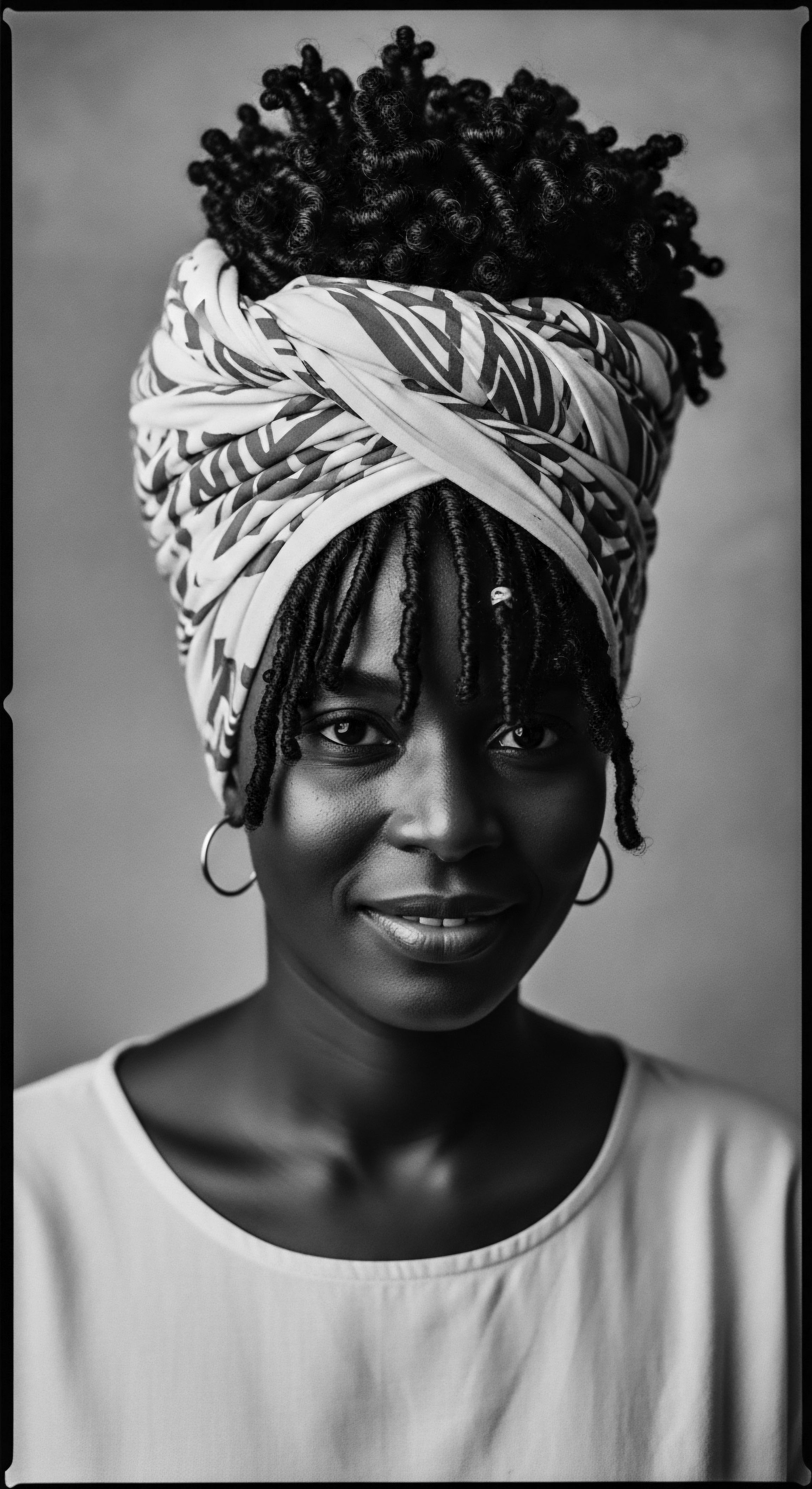
Ritual
The act of adorning textured hair with a head wrap carries weight far beyond mere aesthetics; it is a ritual, a profound connection to generations of care, resistance, and self-expression. For our ancestors, particularly those in the diaspora, hair was often a canvas of identity, a marker of heritage, and a silent language. The deliberate covering of hair, a tradition that has evolved across continents and centuries, speaks to a deep, intuitive understanding of its physical vulnerabilities and its cultural significance. The styling of textured hair, in its countless forms, always held within it the dual purpose of beauty and preservation, practices that have been passed down through familial lines like cherished heirlooms.
Protective styles, a cornerstone of textured hair care, find their earliest expressions in the intricate coiffures and coverings of African societies. Before modern terminology, there was the living practice—braids, twists, cornrows, and indeed, head wraps. These were not simply transient trends; they were architectural marvels, designed to minimize manipulation, guard against environmental damage, and retain moisture. A head wrap, in this context, was not an afterthought, but an integral part of the protective styling repertoire, especially for preserving more intricate styles underneath.
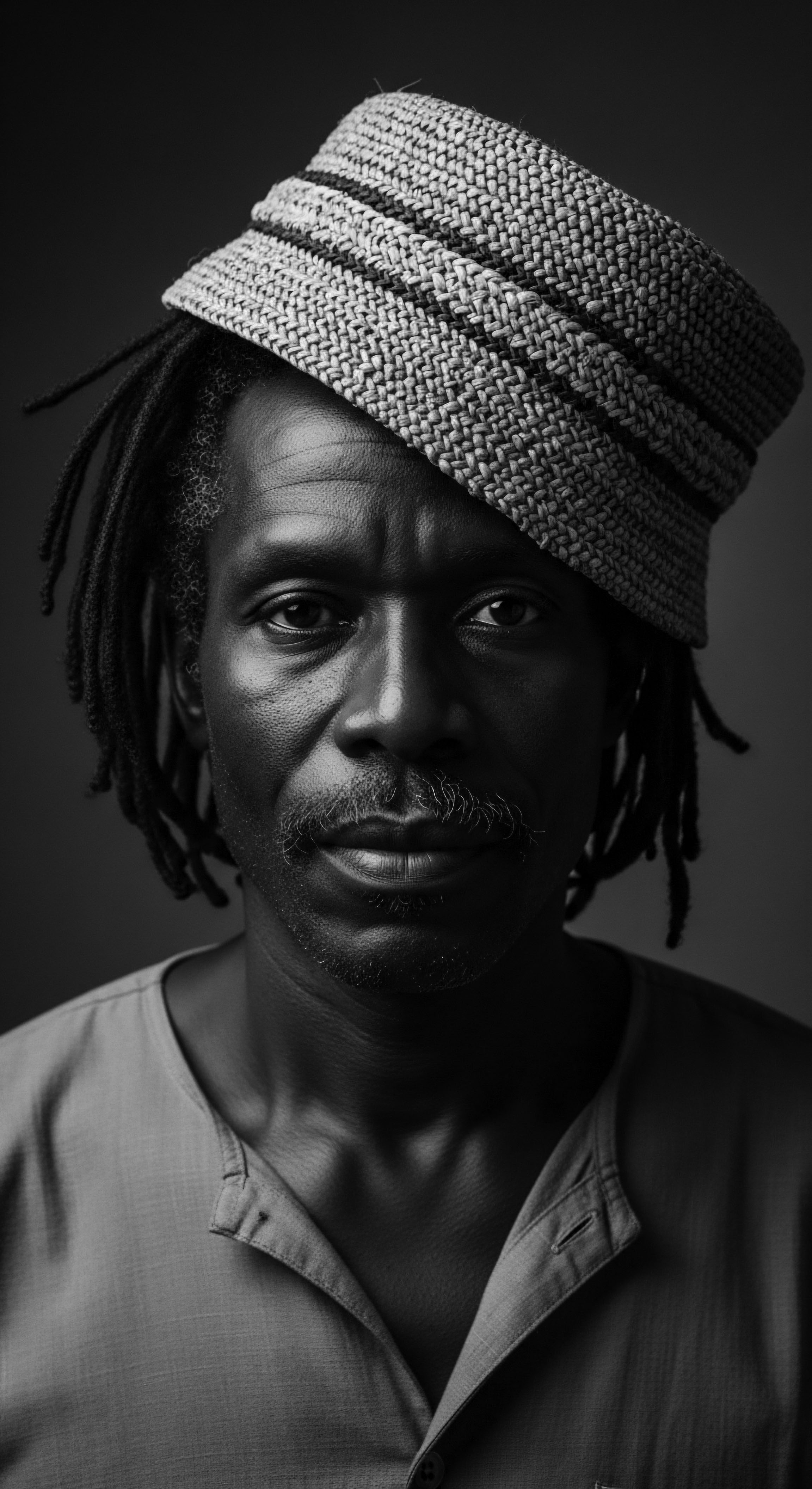
Cultural Influences on Styling Practices
How did the wearing of head wraps shape styling heritage across the diaspora?
The history of the head wrap, or tignon, in New Orleans provides a compelling case study of its dual role in both oppression and powerful cultural reclamation. In 1786, Spanish colonial Governor Don Esteban Miró enacted the Tignon Laws, which mandated that Afro-Creole women, free women of color, cover their hair in public. This edict aimed to curb their perceived social and economic threat to white women, particularly as their elaborate hairstyles and opulent dress attracted attention from white men (Virginia M. Gould, as cited in “When Black Women Were Required By Law to Cover Their Hair”, 2018; Byrd & Tharps, 2001, p.
55). The intent behind the law was to diminish their allure, to visually mark them as belonging to a subordinate class, whether enslaved or free. Yet, the women of New Orleans responded with extraordinary creativity. They transformed the mandated head covering into a vibrant statement of defiance and unique beauty, using luxurious fabrics, vivid colors, and artistic tying techniques.
The tignon became a symbol of resistance, an affirmation of their identity and dignity in the face of discriminatory legislation (Byrd & Tharps, 2001, p. 55). This historical example reveals how the head wrap, initially imposed as a tool of suppression, was transmuted into a powerful tool of self-expression and cultural pride, inherently linking it to moisture retention as a protective measure against environmental elements and the friction of daily life, while simultaneously preserving intricate styles underneath.
The Tignon Laws, intended to suppress, instead saw Afro-Creole women transform the head wrap into a vibrant symbol of resilience and cultural pride.
Across various African traditions, head coverings signified marital status, age, spiritual devotion, or community affiliation. The materials themselves—handwoven cloths, vibrant prints—often told stories of lineage and land. Chris Spring’s work, African Textiles Today, reveals how cloth in Africa records history, serving as a mnemonic device for events, people, and political causes. This deeper understanding of fabric as a repository of meaning underscores the profound cultural weight carried by head wraps, beyond their practical function of hair protection.
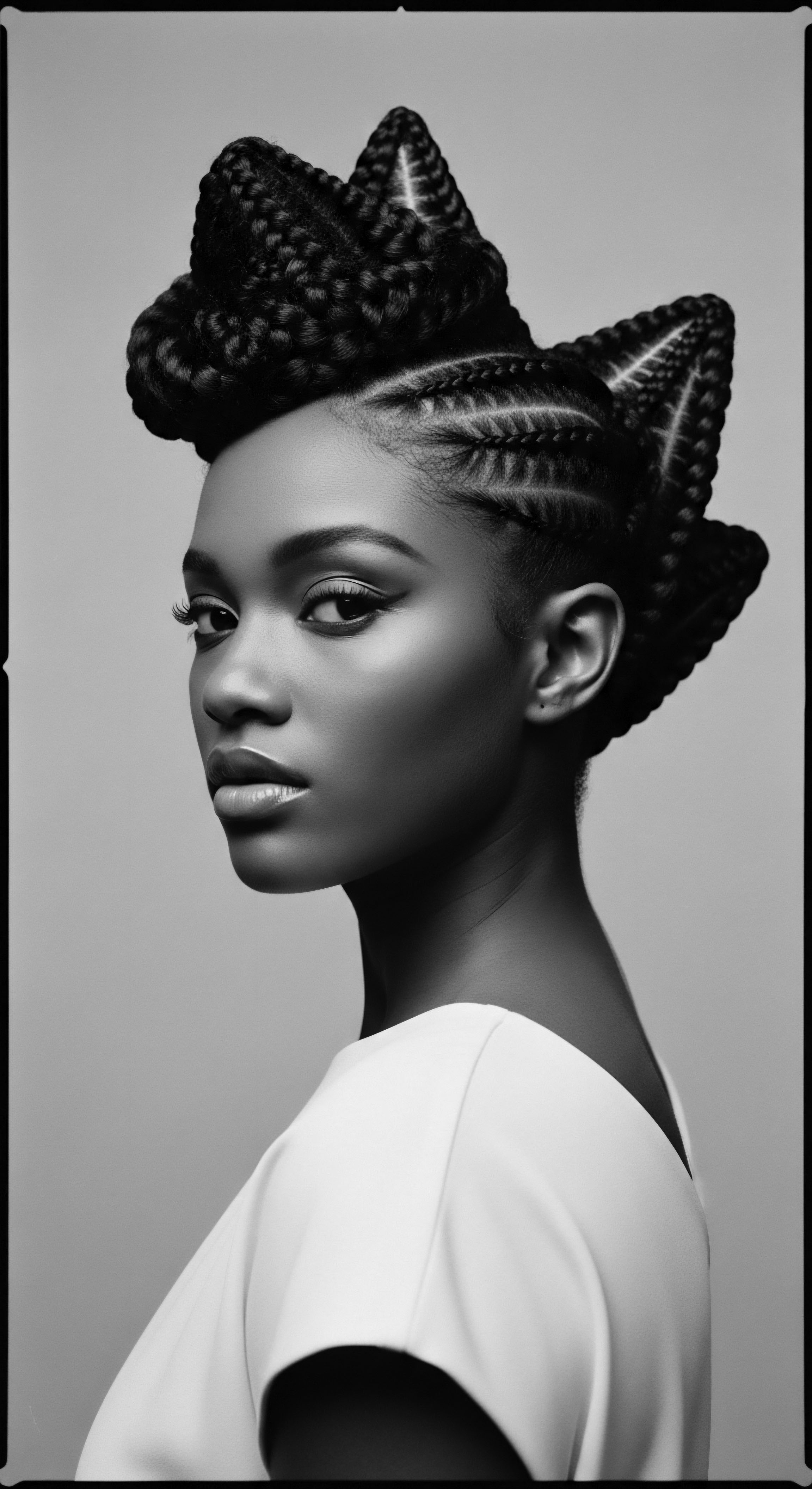
Tools and Traditions in Hair Care
The tools associated with textured hair care, from ancient combs carved from wood to modern wide-tooth varieties, were always geared towards minimizing breakage and preserving the integrity of the hair. The head wrap, while not a tool in the conventional sense, acted as a protective envelope, an extension of careful handling. It shielded hair from harsh sun, dust, and the drying effects of wind, all factors that could strip moisture and compromise the hair’s natural elasticity.
Modern protective styling techniques, such as braids, twists, and locs, owe a debt to these ancestral practices. Each twist and plait, each careful tuck of a head wrap, contributes to creating an environment where the hair is less exposed to friction and environmental stressors. This enclosed space under a wrap can help to stabilize the microclimate around the hair, reducing the rate of moisture evaporation from the hair shaft.
The very fabric of the head wrap itself matters. Materials such as Silk and Satin, favored in modern care, are celebrated for their smooth surfaces, which minimize friction against the hair cuticle. Historically, the choice of fabric might have been dictated by local availability and cultural significance, yet the innate understanding of what materials best preserved hair health persisted. The soft, breathable nature of many traditional fabrics offered a gentle cocoon, protecting delicate strands from snagging and pulling, especially during sleep or strenuous activity.
The art of tying a head wrap, a skill passed down through generations, became a subtle language. The height, the asymmetry, the knots—each element could communicate identity, status, or even mood. This artistic expression was intertwined with the practical benefits of hair preservation. A well-tied wrap not only protected hair but also served as a sophisticated adornment, reflecting a deep cultural connection to beauty and self-presentation.
- Ashanti Kente Cloth ❉ Traditionally worn by the Ashanti people of Ghana, its intricate geometric patterns and vibrant colors are not only visually striking but also represent deep cultural meanings, often used for head coverings and ceremonial dress. (Spring, 2012)
- Dida Cloth ❉ From Côte d’Ivoire, known for its raffia weaving techniques, often used for garments and head coverings, reflecting the connection between natural fibers and traditional attire.
- Yoruba Adire ❉ A resist-dyed indigo cloth from Nigeria, frequently used for head wraps, symbolizing status and aesthetic appreciation through its complex patterns.
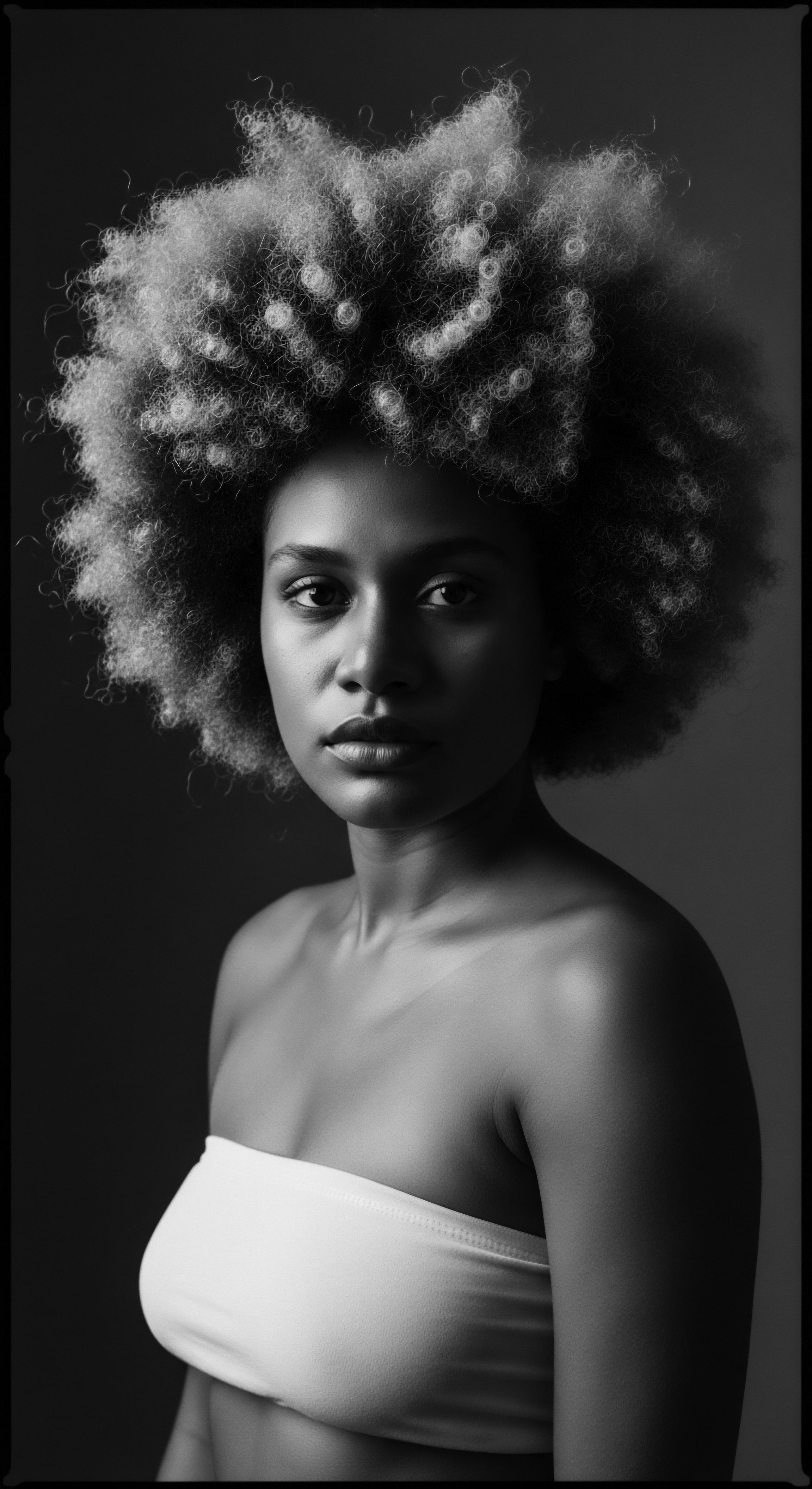
Relay
The profound understanding of textured hair, its innate predisposition to dryness, and the ancestral responses to this challenge culminate in the elegant simplicity of the head wrap. Its efficacy in improving moisture retention is not merely anecdotal; it is deeply rooted in both the elemental biology of the hair strand and centuries of human ingenuity, particularly within Black and mixed-race communities. This daily ritual, seemingly simple, acts as a sophisticated micro-environment for hair, safeguarding its delicate moisture balance against the incessant demands of the world. To truly grasp this, we must connect the wisdom of the past with the scientific insights of the present, allowing ancestral practices to speak a language validated by modern understanding.

How Does a Head Wrap Preserve Hair Moisture?
At its heart, the head wrap functions as a physical barrier, a protective cocoon that isolates the hair from external aggressors. Textured hair, with its unique helical structure, exhibits a higher surface area and often a more exposed cuticle compared to straight hair (Robbins, 2012, p. 116). This structural reality means water molecules readily escape from the hair shaft into the surrounding air through evaporation.
A head wrap, especially one crafted from non-absorbent, smooth materials, significantly slows this process. By enclosing the hair, it creates a localized, humid microclimate, essentially trapping the moisture that would otherwise dissipate. This reduced evaporation rate maintains the hair’s internal hydration levels, leading to increased softness, elasticity, and reduced breakage over time.
Consider the delicate cuticle layer, the hair’s outermost protective shield. This layer, composed of overlapping scales, is particularly susceptible to damage from friction. Daily activities—tossing and turning during sleep, contact with rough fabrics like cotton pillowcases, or even the movement of hair against clothing—can cause these cuticles to lift, abrade, and eventually chip away. When the cuticle is compromised, the hair’s internal cortex, which houses the vital proteins and moisture, becomes exposed and vulnerable.
A head wrap, especially those made from silk or satin, minimizes this abrasive contact. The smooth surface of these fabrics allows hair strands to glide rather than snag, preserving the integrity of the cuticle and, by extension, its ability to hold moisture within the hair shaft.
Furthermore, head wraps act as a shield against environmental elements. Direct exposure to sun, wind, and dry air can severely dehydrate hair. The sun’s UV rays can degrade hair proteins and lipids, while wind can physically strip moisture.
A wrap provides a tangible defense against these dehydrating forces, preserving the hair’s natural lipid barrier and preventing excessive moisture loss. This comprehensive protection extends the efficacy of any moisturizing products applied to the hair, allowing oils, creams, and leave-in conditioners to truly penetrate and condition the strands rather than evaporating into the atmosphere.
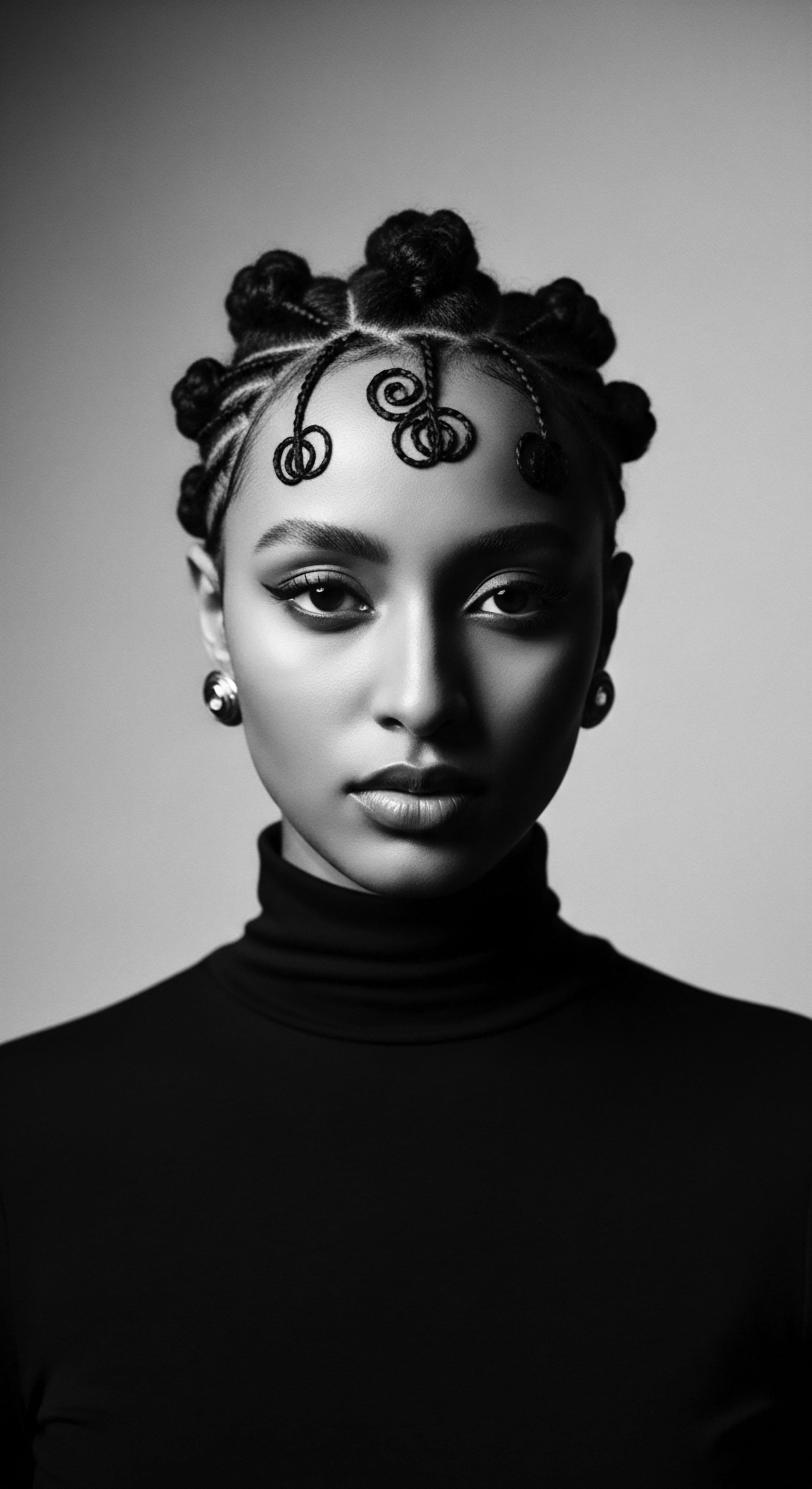
Ancient Remedies, Modern Science
The efficacy of head wraps in moisture retention finds resonance with ancestral wellness philosophies that recognized the hair as a vital extension of the self, deserving of reverence and holistic care. Ancient African cultures, for instance, often incorporated various plant-based oils and butters into their hair care regimens, substances like Shea Butter from West Africa or Argan Oil from North Africa. These emollients, applied to the hair, would have been sealed in by protective styles and head coverings, creating a synergistic effect where the wrap enhanced the benefits of the natural ingredients.
| Concept Moisture Preservation |
| Ancestral Observation Hair feels softer and more pliable when covered, especially overnight or in harsh weather. |
| Modern Scientific Explanation Head wraps create a localized, humid microenvironment, reducing the rate of transepidermal water loss from the hair shaft. |
| Concept Friction Reduction |
| Ancestral Observation Hair breaks less when styled in braids or covered with soft cloths. |
| Modern Scientific Explanation Smooth fabrics like silk or satin minimize mechanical abrasion on the hair cuticle, preventing breakage and preserving its protective layer. |
| Concept Ingredient Efficacy |
| Ancestral Observation Oils and butters work better when hair is wrapped or braided. |
| Modern Scientific Explanation The occlusive effect of a head wrap allows emollients and humectants to penetrate more deeply, enhancing their conditioning and moisturizing properties. |
| Concept Ancestral practices, like head wrapping, instinctively responded to the hair's biological needs, offering a holistic approach to hair health. |
This interplay is particularly meaningful for textured hair, which naturally has fewer lipid components on its surface compared to straighter hair types, making it inherently prone to dryness (Robbins, 2012, p. 119). The ancestral practice of coating hair with natural fats and then protecting it with a wrap was a sophisticated response to this biological reality, effectively compensating for the hair’s natural lipid deficiency and minimizing moisture evaporation.
- Baobab Oil ❉ Extracted from the seeds of the African baobab tree, this oil was historically used for its moisturizing properties on both skin and hair, often applied before styling and wrapping.
- Chebe Powder ❉ A traditional Chadian mixture of herbs, used by Basara women to retain moisture and length, often applied to hair which is then braided and covered.
- Palm Oil ❉ A historically significant ingredient in many West African cultures, utilized for its conditioning qualities and often incorporated into hair treatments before protective covering.
The practice of head wrapping, therefore, stands as a testament to the continuous dialogue between environmental conditions, hair biology, and cultural innovation. It is a powerful example of how ancestral wisdom, passed down through generations, offers highly effective solutions that are now validated by modern scientific understanding. The head wrap, far from being a mere accessory, is a vital tool in the holistic care of textured hair, a bridge between a rich heritage and contemporary well-being.
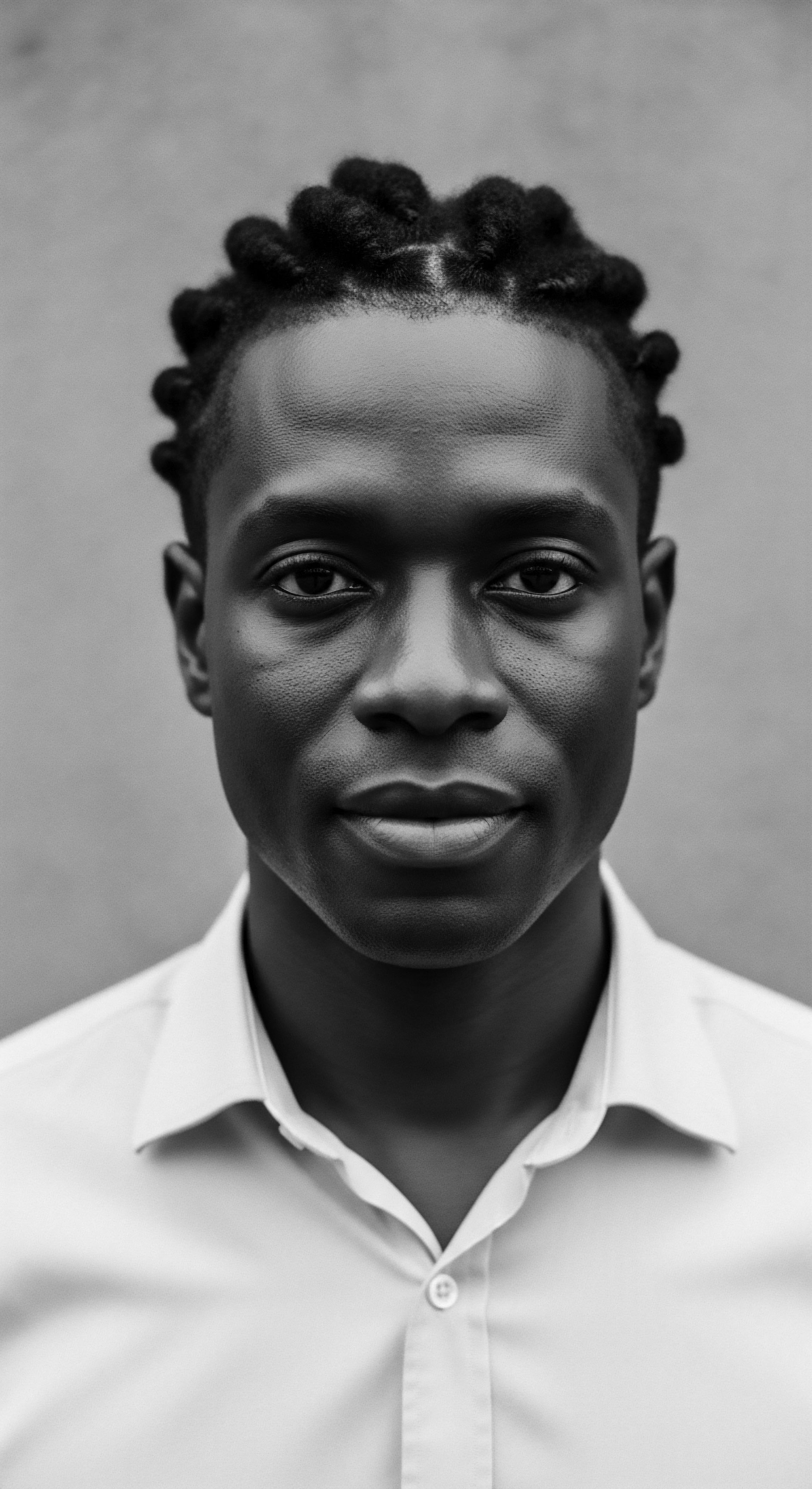
Reflection
As we untangle the enduring wisdom surrounding head wraps and their profound connection to textured hair, we find ourselves standing at the crossroads of time—where ancestral echoes meet contemporary understanding. The journey of a single strand, from its unique helical shape to its delicate moisture balance, has always been intimately tied to the human hand that cares for it, and the cultural context that shapes its meaning. Head wraps, born of necessity, resistance, and artistic expression, offer more than just a practical solution to moisture retention; they offer a dialogue with our past, a reaffirmation of identity, and a pathway to a future where textured hair is universally celebrated for its innate beauty and strength.
The ‘Soul of a Strand’ ethos, woven through this exploration, reminds us that textured hair is not just biological matter; it carries the weight of history, the joy of resilience, and the power of self-definition. From the Tignon Laws of New Orleans, which attempted to suppress the visibility of Afro-Creole women’s hair yet inadvertently sparked a flourishing of defiant adornment, to the everyday ritual of wrapping hair before rest, each act is a continuation of a living archive. This continuous interaction with head coverings signifies an unbroken chain of knowledge, passed down through generations, ensuring the vitality and preservation of our coils and curls.
To engage with the head wrap is to engage with a legacy—a legacy of protective ingenuity, of cultural declaration, and of an enduring commitment to hair health that spans continents and centuries. It is a testament to the profound intelligence of our ancestors, who, with intimate knowledge of their hair and their environments, crafted solutions that remain remarkably effective today. Our relationship with our textured hair, enriched by the wisdom of the head wrap, is a continuous story of discovery, self-love, and connection to the vast, vibrant heritage that defines us.
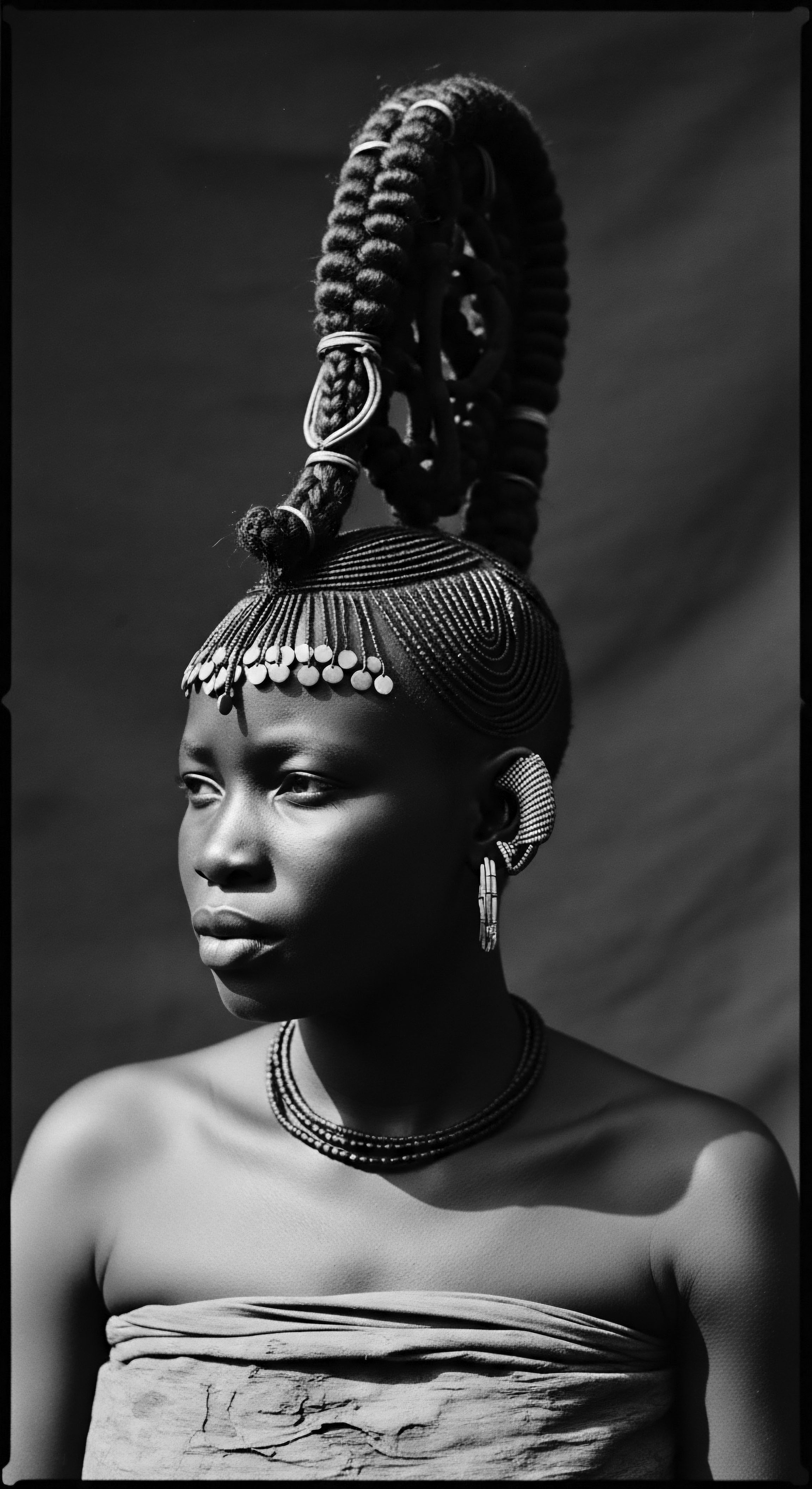
References
- Byrd, A. D. & Tharps, L. L. (2001). Hair Story ❉ Untangling the Roots of Black Hair in America. St. Martin’s Griffin.
- Gould, V. M. (2018). In Defense of Their Creole Culture ❉ The Free Creoles of Color of New Orleans, Mobile, and Pensacola. (Original work published 1993, as cited in “When Black Women Were Required By Law to Cover Their Hair”, Vice, 2018).
- Mercer, K. (1994). Welcome to the Jungle ❉ New Positions in Black Cultural Studies. Routledge.
- Robbins, C. R. (2012). Chemical and Physical Behavior of Human Hair (5th ed.). Springer-Verlag.
- Spring, C. (2012). African Textiles Today. British Museum Press.
- Tate, S. A. (2009). Black Beauty ❉ Aesthetics, Stylization, Politics. Ashgate.
